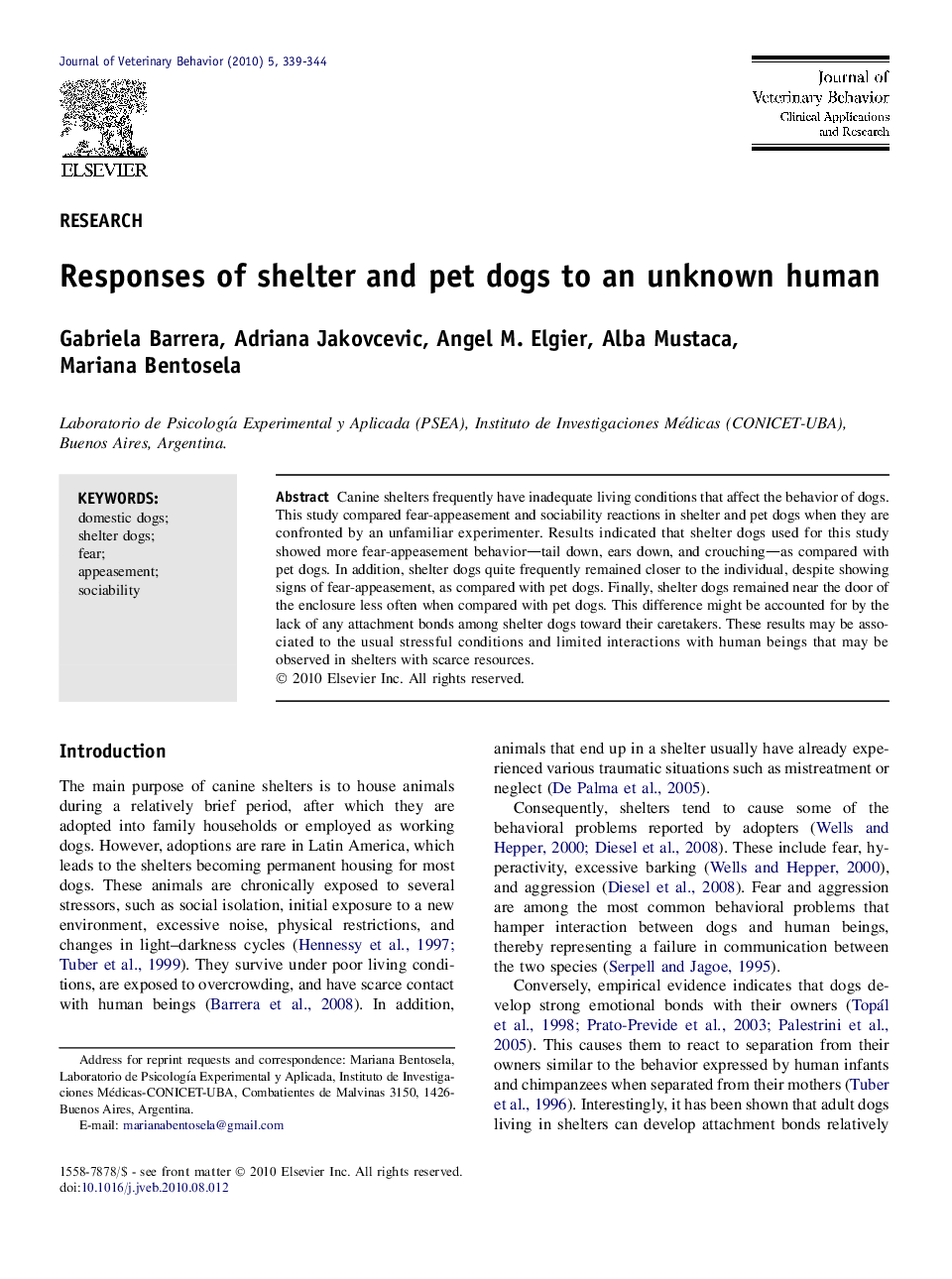| Article ID | Journal | Published Year | Pages | File Type |
|---|---|---|---|---|
| 2399280 | Journal of Veterinary Behavior: Clinical Applications and Research | 2010 | 6 Pages |
Canine shelters frequently have inadequate living conditions that affect the behavior of dogs. This study compared fear-appeasement and sociability reactions in shelter and pet dogs when they are confronted by an unfamiliar experimenter. Results indicated that shelter dogs used for this study showed more fear-appeasement behavior—tail down, ears down, and crouching—as compared with pet dogs. In addition, shelter dogs quite frequently remained closer to the individual, despite showing signs of fear-appeasement, as compared with pet dogs. Finally, shelter dogs remained near the door of the enclosure less often when compared with pet dogs. This difference might be accounted for by the lack of any attachment bonds among shelter dogs toward their caretakers. These results may be associated to the usual stressful conditions and limited interactions with human beings that may be observed in shelters with scarce resources.
